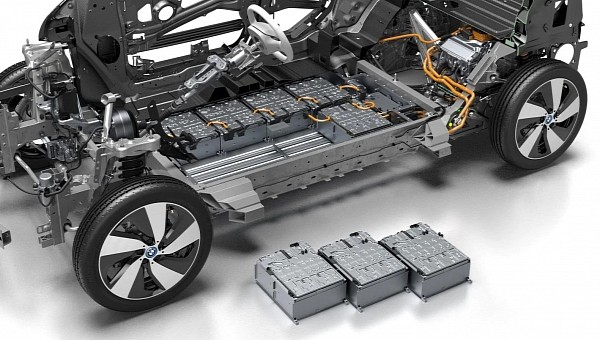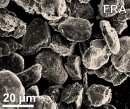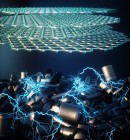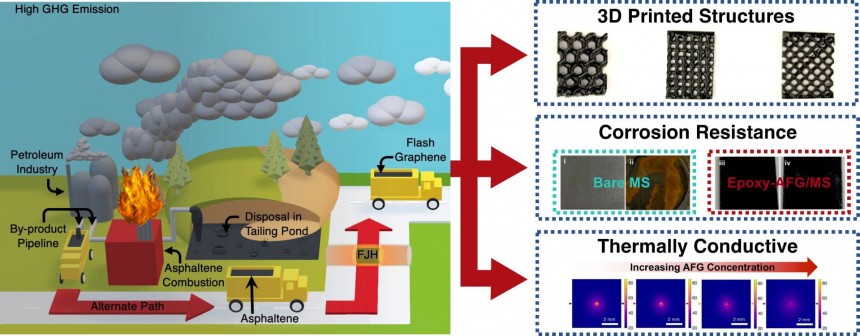Batteries, batteries, batteries. Lithium-ion batteries are the near-future’s biggest bet in the auto industry. Their production is expected to boost in the next years, driven by a fast increase in demand for electric cars.
Many companies want a piece of this. So Rice University scientists claim that their process Flash Joule Heating, invented in 2020, “can recover critical metals and recondition anodes in a far more environmentally and economically friendly manner.”
Basically, charging and discharging batteries are to blame for their anodes’ degradation in time. This degradation means that those rare-elements particles are collecting at the surface of the anode as inorganic salts. Today’s recycling methods are not the best, but they are evolving at an astonishingly fast pace. Still, recovering and reusing rare-earth elements for new anodes are energy-intensive processes. That’s where Rice’s Flash Joule Heating could improve things by a large margin.
Rice scientists’ lab tests showed that an anode recycled using their process retained more than 77% of the capacity after 400 charge cycles. This is especially important for energy storage systems or low-power applications, such as e-bike batteries. It sounds wonderful, but you should take any scientific claim with a grain of salt. After all, universities are chasing funds. Funds are coming from companies or from governments if you can show some exciting results. You need good marketing.
Rice’s scientists are pretty confident in their experiments. They are going to conduct further tests on lithium-ion batteries’ cathodes and electrolytes. But you know what? We’re confident in their results, ‘cause Flash Joule Heating has more other aces up its sleeve.
Basically, Ford made better parts from plastic waste using Rice’s process. But wait, there’s more to it. When this foam reaches its end-of-life, it can be turned back into graphene thanks to this “magical” Flash Joule Heat. Harry Potter surely digs this! You’ll better understand the tremendous potential when I’ll tell you that in the last few years, the amount of plastic used in vehicles has increased by 75%. A car nowadays holds more than 500 pounds (or more than 200 kg) of plastic parts. There are over a billion cars out there. You do the math for how much plastic is there to be recycled in conventional ways (that are far more polluting than Rice’s process). Consider that much of it is already in landfills or even incinerated.
Well, it looks like Rice’s scientists have the solution for one of Big Oil’s corpses in the closet. They mixed the carbon-rich asphaltene with 20% of conductive carbon black. Then the mixture was compressed inside a quarts-tube between two copper electrodes. After applying an adapted Flash Joule Heat process, asphaltene was transformed into a form of graphene named AFG. It was then dispersed into a polymer that improved a lot in terms of mechanical, thermal, and corrosion-resistant properties.
Is this of any use? Well, it’s estimated that all the asphaltenes reserves in the world are between one and two trillion barrels - which translates to one and two hundred trillion liters. C’mon, is anyone able to even imagine such an astronomic quantity? Well, these scientists from Rice University apparently did. They claim they can transform this polluting waste into high-valuable material. I really hope this is not just marketing! Although it may raise concerns as it sounds like… alchemy.
I really hope to see as soon as possible a bunch of companies willing to put this solution into good practice. I mean, these guys claimed in February 2022 that Flash Joule Heat is perfect for extracting rare-earth elements from hazardous waste like coal ash, bauxite residue, or electronic waste. We already know that we have literally mountains of waste worldwide. All we need is to speed up scaling up this brilliant-bur-overlooked process. It could really boost the circular economy we need to transition to.
Why do batteries die?
It doesn’t matter that lithium-ion batteries are powering a smartphone or an EV. They eventually will reach end-of-life because their anodes are becoming useless. Anodes are made from several rare-earth elements, like manganese, nickel, or cobalt, which are combined in different ratios.Basically, charging and discharging batteries are to blame for their anodes’ degradation in time. This degradation means that those rare-elements particles are collecting at the surface of the anode as inorganic salts. Today’s recycling methods are not the best, but they are evolving at an astonishingly fast pace. Still, recovering and reusing rare-earth elements for new anodes are energy-intensive processes. That’s where Rice’s Flash Joule Heating could improve things by a large margin.
Almost a “superhero” process
This process consists of a series of very high-voltage electrical pulses, which essentially remove impurities from anodes. These inorganic salts are quickly and efficiently decomposed, and then they can be recovered by processing them with dilute hydrochloric acid. I know, using that acid doesn’t sound environmentally friendly at all. But the good news is, using Rice’s process, a far less quantity of acid is needed because the anode doesn’t need to be transformed into powder. It is simply cleaned or regenerated. Or better reconditioned. This means that using Flash Joule Heating degrades the performance of the anode, but it also “coats the remaining graphite particles with an ion-permeable carbon shell.” It comes down to an interesting advantage: this anode has better cycling stability compared to one manufactured using materials recovered by a conventional calcination process.Rice’s scientists are pretty confident in their experiments. They are going to conduct further tests on lithium-ion batteries’ cathodes and electrolytes. But you know what? We’re confident in their results, ‘cause Flash Joule Heating has more other aces up its sleeve.
How about recycling plastic over and over again?
One of the most exciting experiments of 2022 was using this process for turning plastic waste into graphene. More precisely, Rice’s chemists turned 10 pounds (almost 5 kg) of different plastic car parts from a vehicle shredding facility into graphene. Researchers at the Ford Motor Company turned this graphene (by the way, graphene is the lightest and the strongest material made by humankind) into foam composites. Tests showed that this graphene-infused foam had “a 34% increase in tensile strength and a 25% increase in low-frequency absorption.”Basically, Ford made better parts from plastic waste using Rice’s process. But wait, there’s more to it. When this foam reaches its end-of-life, it can be turned back into graphene thanks to this “magical” Flash Joule Heat. Harry Potter surely digs this! You’ll better understand the tremendous potential when I’ll tell you that in the last few years, the amount of plastic used in vehicles has increased by 75%. A car nowadays holds more than 500 pounds (or more than 200 kg) of plastic parts. There are over a billion cars out there. You do the math for how much plastic is there to be recycled in conventional ways (that are far more polluting than Rice’s process). Consider that much of it is already in landfills or even incinerated.
Even the oil industry could benefit from the process
Rice University’s chemistry department does surely have good marketing. Recently they proudly announced that Flash Joule Heating is able to turn asphaltene into graphene. And this is pretty big news for the oil industry. Asphaltenes are oil-processing low-value by-products. They are either used as low-grade fuels in some transport areas (thus heavy pollution) or simply discarded in landfills (thus a tremendous environmental problem).Well, it looks like Rice’s scientists have the solution for one of Big Oil’s corpses in the closet. They mixed the carbon-rich asphaltene with 20% of conductive carbon black. Then the mixture was compressed inside a quarts-tube between two copper electrodes. After applying an adapted Flash Joule Heat process, asphaltene was transformed into a form of graphene named AFG. It was then dispersed into a polymer that improved a lot in terms of mechanical, thermal, and corrosion-resistant properties.
Is this of any use? Well, it’s estimated that all the asphaltenes reserves in the world are between one and two trillion barrels - which translates to one and two hundred trillion liters. C’mon, is anyone able to even imagine such an astronomic quantity? Well, these scientists from Rice University apparently did. They claim they can transform this polluting waste into high-valuable material. I really hope this is not just marketing! Although it may raise concerns as it sounds like… alchemy.
I really hope to see as soon as possible a bunch of companies willing to put this solution into good practice. I mean, these guys claimed in February 2022 that Flash Joule Heat is perfect for extracting rare-earth elements from hazardous waste like coal ash, bauxite residue, or electronic waste. We already know that we have literally mountains of waste worldwide. All we need is to speed up scaling up this brilliant-bur-overlooked process. It could really boost the circular economy we need to transition to.







